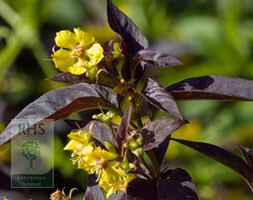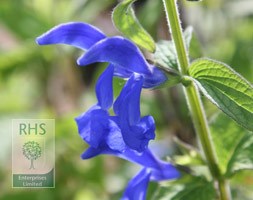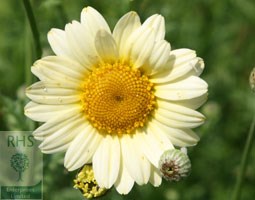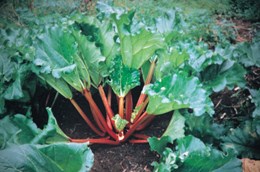New products at Crocus
by Sarah - September 4th, 2014.Filed under: Crocus, New Products.
New products today at Crocus
Lysimachia ciliata ‘Firecracker’ (loosestrife) £5.99
Position: full sun or partial shade Soil: humus-rich, moist but well-drained soil Rate of growth: average Flowering period: July and August Hardiness: fully hardy Tall stems of pointed leaves that are richly flushed with deep purple, are topped with pale lemon flowers in July and August. This loosestrife will thrive in a moist herbaceous border or bog garden. Forming compact colonies, it is less invasive than the popular yellow loosestrife and will happily grow in sun or shade. Garden care: Incorporate lots of organic matter when planting. Apply a generous 5-7cm mulch of well-rotted garden compost or manure around the base of the plants in spring and lift and divide congested colonies.
Salvia patens (gentian sage) £5.99
Position: full light (with shade from hot sun) Soil: well-drained Rate of growth: average Flowering period: July to September Flower colour: blue Hardiness: frost hardy (needs winter protection) Producing a spectacular dispaly from midsummer to mid-autumn, when the larger than average, piercing blue flowers appear, this gentian sage will thrive in sheltered, sunny gardens with well-drained soils. Garden care: To prolong flowering remove the flower spikes as soon they start to fade. Apply a generous 5-7cm (2-3in) mulch of well-rotted garden compost or manure around the base of the plant in spring.
Anthemis tinctoria ‘Sauce Hollandaise’ (dyer’s chamomile) £4.99
Position: full sun Soil: well-drained soil Rate of growth: average Flowering period: May-July Hardiness: fully hardy This chamomile produces masses of creamy yellow, daisy flowers above feathery, filigree-like dark green leaves from late spring to early summer. It’s perfect to cheer up a sunny herb garden or rockery, will tolerate dry soil, and is attractive to bees and butterflies. Garden care:: Cut back to the ground in early autumn to produce stronger growth the following year. Although it will self-seed freely, this cultivar rarely comes true from seed.
Rhubarb ‘Livingstone’ (Livingstone autumn rhubarb) £4.99
Position: full sun Soil: any, except waterlogged soils Rate of growth: average Other features: the leaves may cause severe discomfort if ingested; the scarlet leaf stalks are excellent for making pies, jams and wine Hardiness: fully hardy Perfect for extending the season, this new British bred rhubarb is the first to produce its succulent, stringless stems in autumn. This breakthrough has been achieved by putting an end to the summer dormancy, which means you will be able to harvest the crop from September to November. The plants will need a year or two to become established, but after that they will go on to produce a generous crop on handsome, disease-resistant plants. Garden care: Potted rhubarb can be planted out at any time of the year provided the ground is not frozen. Rhubarb needs an open, sunny spot with fertile, moist but freely-draining soil. Heavy soils should be avoided as overly-wet conditions in winter may rot the crowns. Potted rhubarb can be planted out at any time of the year provided the ground is not frozen. Rhubarb does need a cold period before it will start to put on new growth in spring, however hard frosts may damage the newly emerging growth, so try not to plant in a frost pocket if you can. Prepare the bed well by removing weeds and digging in composted manure, and plant the crowns at intervals of 75cm – 1m, making sure the dormant buds are just below the surface of the soil. Keep well watered and in spring apply a dressing of composted manure, making sure you avoid covering the crown of the plant. It is important that the stalks are not harvested in their first year as this will adversely affect the plants vigour, but cut any old, yellow leaves off after they have faded and remove all the leaves after they have died back in winter. You should also remove any flowering stalks which appear. In the second year, you may start to harvest some of the stems, but restrict yourself to between a third and a half of the total crop, leaving the rest to mature on the plant. In subsequent years, stems can be harvested from autumn into winter, although the stems tend to become tougher and less tatsy towards the end of the season. Allowing some late-developing stems to develop fully will also help the plant generate more energy for the following years crop.










